new posts in all blogs
Viewing: Blog Posts Tagged with: Effects/Phenomena, Most Recent at Top [Help]
Results 1 - 21 of 21
How to use this Page
You are viewing the most recent posts tagged with the words: Effects/Phenomena in the JacketFlap blog reader. What is a tag? Think of a tag as a keyword or category label. Tags can both help you find posts on JacketFlap.com as well as provide an easy way for you to "remember" and classify posts for later recall. Try adding a tag yourself by clicking "Add a tag" below a post's header. Scroll down through the list of Recent Posts in the left column and click on a post title that sounds interesting. You can view all posts from a specific blog by clicking the Blog name in the right column, or you can click a 'More Posts from this Blog' link in any individual post.
In water refections, the reflected image mirrors the subject at a slightly darker value, deepening the colors of whatever it's reflecting.
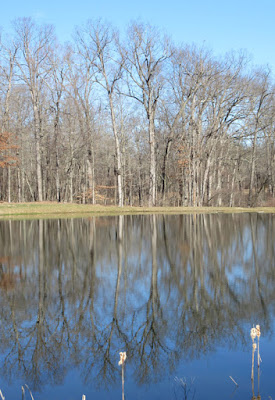
Even in still water, distortions begin changing the reflected image. Verticals remain legible, but they're typically blurred in the vertical direction. Thin horizontal lines disappear.
Tiny ripples introduce wobble into the image, but the components of the image—in this case branches, tree trunks, and sky—are still legible as separate elements.
How is this different with reflections on ice?
Here are three different photographs taken of a pond at the same time of morning on different sunny days.
• In #1, the open water is a little more disturbed than in the previous picture, so the ripple distortions are greater.
• In #2, a thin layer of smooth ice has formed. The range of values of the reflection is less than with the water surface. Where the ice refroze and formed a thicker edge in the middle, it reflects more deep blue color from the sky.
• In #3, the ice has aged several days, roughening the surface and making it less reflective. The value range is even narrower.
Below are three photos of ice reflections on overcast days. In all three, the overcast conditions reduce the contrast of warm and cool colors, and they all appear more gray.
• #1 is ice with a thin layer of water on top of it. The ice raises the values of the deepest darks, but the water offers a clear reflection of the trees.
• In #2, ice at the edges vs. open water in the middle of the pond shows the difference between the two.
• #3. Older ice reflects the trees as soft dark verticals against a light sky all the way to the far shore.
The bottom line: Ice reflections are less definite than water reflections. They are blurrier, and they should be painted with a narrower range of values. If you're not bold enough with water reflections, they tend to look like ice reflections.
-----
My book
Color and Light: A Guide for the Realist Painter discusses reflections, atmospheric effects, and a lot more. You can get it
from Amazon
or
at my website.
Previous series:

A few days ago I photographed this circumzenithal arc in the sky above the Hudson Valley. These halo phenomena are sometimes called "smiles in the sky" or "upside down rainbows."
Unlike a normal rainbow, which describes a circle centered around the antisolar point (directly opposite the sun), this light effect curves around the zenith. The colors appear on the section of the circle closest to the setting sun.
Whereas the regular rainbow is the result of sunlight bouncing back to the eye in suspended raindrops, this effect occurs when sunlight refracts through plate-shaped hexagonal ice prisms floating in a horizontal position in cirrus clouds. Therefore, it often appears interrupted as it intersects the parallel tendrils of the clouds.
-----
Wikipedia on
circumzenithal arc

(Link to YouTube video) Slit scan video transforms everyday scenes by elongating, compressing, and twisting elements into trippy dreamscapes. This one was made with an inexpensive Mac app.
Kamil Sladek explains how it works on Gizmodo:
You can make your own slit camera out of any video capable digital camera with a regular sensor and a regular lens. All you need to do is the following:
1. record a video of your action
2. extract each frame as an individual image (the opposite to what you would do for a time lapse)
3. extract a vertical single pixel wide line from each image (for example a line from the center)
4. stack those lines horizontally from left to right to form an actual "slit scan" image
This can be automated by tools like e.g. ImageMagick and the longer your initial video was, the wider your image will be. In fact, the width of your slit scan image will have exactly the same amount of pixels as your initial video's frame number.
Now, to go one step further you can proceed for all the other vertical lines of your images and create one slit scan image for each particular set of vertical lines. This will give you a set of as many slit scan images as your initial video was wide in pixels. Combining that set of slit scan images to a video (this time exactly as in a time lapse) your result can look like this.
Via BoingBoing
Rob Legato creates visual effects for big-budget movies.
(Video link) In this TED talk, he shares how he created effects sequences for Apollo 13, Titanic, and Hugo. In the first two cases, actual documentary film footage exists of some of the scenes he was visualizing. The real footage served as a reality check against the cinematic invention.
One of the surprising revelations is that our sense of what looks real is greatly influenced by the emotional processes of our memories, which reorder reality into a composite fiction.
That emotionally tinged version of reality is what moviemakers need to bring to life if they want to create convincing illusions. The same general principle applies to painting. Often it's necessary to go beyond optical or photographic realism in order to achieve psychological realism. It's the difference between mere accuracy and true believability.
------
Rob Legato on TED: The Art of Creating Awe
Before the big thunderstorm arrived last Tuesday night, I sat outside and sketched some strange cloud formations.
They're called mammatus clouds, named so because their pendulous forms resemble an animal's udder or a woman's breasts. They are found at the base of anvil clouds, the giant cumulonimbus clouds that generate extreme thunderstorms.
As I made this quick notation with my water brushes, the wind whipped the treetops. The clouds swirled and turned green. Big raindrops started falling around me. I folded up my sketch gear and retreated indoors. Hail pounded the deck outside. Lightning flashed, then thunder. Suddenly the electric power died and stayed out for several hours.
I finished the sketch by the light of a kerosene lantern.
Mammatus clouds on Wikipedia
An iceberg gets top-heavy and gracefully turns over. The berg calved from Argentina's Uppsala glacier.
---
via Best of YouTube
Brainstorm Digital created this video of visual effects breakdowns to show all the layers of elements that go into reconstructing a historical world on film.
It's a good demonstration of the Emmy-award winning artistry of the people who work in
compositing, an often-overlooked part of the visual effects industry that involves sophisticated judgments about edges, light, and color.
No, it's not Sauron reaching across from Mount Doom. It's just the shadow of Mount Rainier in the northwestern U.S., cast across the underside of the clouds at sunrise.
At the brief moment of sunrise and sunset, the rays of sun, peeking past the edge of the curving earth, can shine upward toward a horizontal deck of stratus or altostratus clouds, lighting them from below. If a mountain nearly bumps its head on that deck of clouds, it can cast a shadow across it. As with
sunbeams and
shadowbeams, the lines of the shadow converge back to the sun's position.
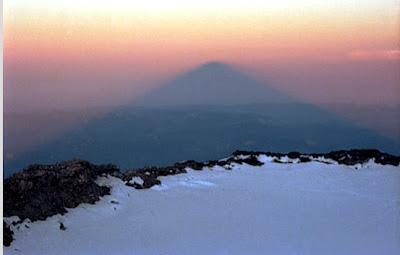
Seen from the top of Mount Rainier, facing away from the sun at sunset, the cast shadow looks triangular. That triangular shape is not the mountain profile you're seeing, but, again, it's the lines of perspective of the edges of the broad mass of shadowed air running back to infinity through lighter illuminated vapor.
-----
On Halloween, Monday, October 31, from 11-12:30, I'll be lecturing on color and light at the Canzani Center Auditorium at the Columbus College of Art and Design in Ohio. It's free and open to the public.Links and CreditsMore photos of Rainier casting shadows at Geekologie The second photo of the mountain shadow is by
Dale Ireland from
Atmospheric OpticsThanks,
Chris VostersPreviously on GurneyJourney:
Reflected SunbeamsShadowbeamsSunbeams
Have a look at “Miniature City Shanghai,” a film of real urban life shot in time lapse and tilt-shift photography. (For feed readers here's a direct link to the video.)
For those who aren’t familiar with it, tilt-shift photography creates the impression of the shallow depth of field in actual large scale scenes. Since we’re accustomed to experience shallow depth of field and fast movement only with small scale scenes, it’s very hard to overcome the impression that we’re looking at frenetic miniatures.
Now try watching Chris Burden’s “Metropolis II,” (direct link to video) an ambitious kinetic model representing the rhythms of urban life. http://www.youtube.com/watch?v=llacDdn5yIE&feature=player_embedded
The macro and micro worlds seem to meet in the middle.
Wikipedia on Tilt Shift photography
Book: The Elements of Photography: Understanding and Creating Sophisticated Images
Not all rainbows occur on rainy days. Rainbows can also form in the mist at the base of waterfalls, such as those at Yosemite Park in California. They occur not only in the daytime, but also at night, with a full moon at your back.
Nocturnal rainbows form in the same way as daytime rainbows: by means of light reflecting and refracting in droplets of water. At night they’re sometimes called “lunar rainbows” or “moonbows.” In this time lapse video, look for the reversed secondary rainbows at 2:40 and 3:00.
Direct link to “Yosemite Nature Notes’ video.
The Nature of Light and Colour in the Open Air (Dover Books on Earth Sciences)
Color and Light: A Guide for the Realist Painter
Thanks, David
Cloud streets are parallel rows of cumulus clouds that line up in the direction of a steady wind.

The lines are typically about five miles apart, with clear sky between, and they can extend for hundreds of miles.
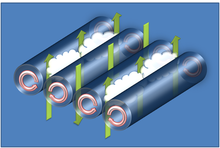 Also called "horizontal convective rolls," they often form over flat country in spring or summer when the wind is blowing beneath an inversion layer. As the wind travels under that layer, it divides into a series of counterrotating cells. Where the air in two adjacent cells lifts upward, a line of clouds forms, and where they join to spin downward, clear air prevails.
Also called "horizontal convective rolls," they often form over flat country in spring or summer when the wind is blowing beneath an inversion layer. As the wind travels under that layer, it divides into a series of counterrotating cells. Where the air in two adjacent cells lifts upward, a line of clouds forms, and where they join to spin downward, clear air prevails.
Glider pilots can stay aloft for miles by following cloud streets.
Wikipedia on Horizontal Convective Rolls
Photo by Stu Ostro from Weather.com
Smooth surfaces are more reflective when you look at them at shallow angles.

You can see this subtle phenomenon best by looking at cars in an open parking lot. Note how the foreshortened plane on the left is highly specular, or mirrorlike, reflecting the scene beyond with a wide range of values.
The back window and tailgate do not reflect the sky or the surrounding cars as brightly.
In previous posts, we’ve seen a related phenomenon with smooth water surfaces, which also become more reflective at grazing angles of incidence. In the case of a transparent fluid surface like water, light that is not reflected is refracted beneath the surface.
A smooth solid surface like a painted car or a pool ball or an apple is generally a blend of specular and diffuse reflection.
But even surfaces that we think of as diffuse reflectors, such as ordinary paper, can be remarkably specular at shallow angles. Hold up a piece of paper at an extremely shallow angle to your eye, so that you’re sighting right along the surface of the paper. If you have bold light and dark lines above that surface (such as the mullions on a window), the paper will behave almost like a mirror, reflecting a fairly clear image of the scene beyond. (Good party trick.)
-------
Thanks, Kevin Bjorke, for telling me about this.
More on such things in "Color and Light: A Guide for the Realist Painter "
"
Related previous posts on GJ:
Escher’s Three Worlds
Color in Mountain Streams
Transparency of Water
Specular and Diffuse Reflection
A light pillar is an optical phenomenon that occurs when the light of the sun reflects off tiny ice crystals floating in the air, forming a vertical column above the sun.
It usually happens when the sun is low in the sky, and sometimes even after it has set.

Light pillars can also occur near the light of the moon or streetlights, as long as ice crystals are floating in the air near you.
Ice crystals are often shaped like tiny flat hexagonal plates. Like falling leaves, they tend to float downward with the flat surface parallel to the ground.
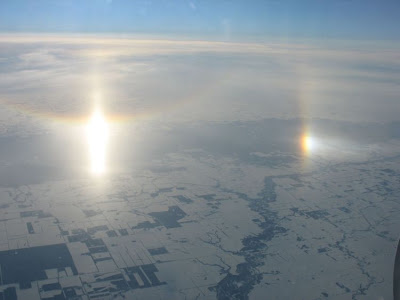
Sometimes you can see a reflection of the sun off the top surface of these floating crystals. Looking down from an airplane window, you might see “sub sun” reflection will occasionally appear in a region below the horizon underneath the sun.
In the case of the magnificent photo above, the secondary light effect is a sub-parhelion, more rarely observed. It's caused by light that reflects off of the hexagonal internal surfaces of the ice crystals.
Wikipedia on light pillar:
check external links
Sub sun image from EPOD.
Nice explanation with diagrams of the ice crystals on Weather Doctor
M.C. Escher’s lithograph "Three Worlds" is a good illustration of the behavior of light on a smooth water surface.
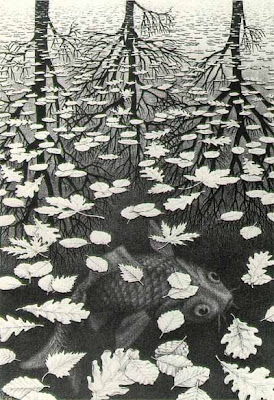
At the far end of the pond, the water approaches the reflectivity of a perfect mirror because we’re looking straight across it at a very shallow angle. At shallow angles, most of the light bounces off the water (reflection) rather than angling down into it (refraction.)
At steep angles of view, the opposite happens: we see less reflection and more refraction. Therefore the water is dark and we see the fish more than the sky or the trees.
Wikipedia about "Three Worlds"
Color and Light, page 200.
Previously on GurneyJourney: Transparency of Water
Ordinary ground mirages look like puddles on hot roads in the desert. They’re called inferior mirages and they’re fairly common.
 Far more rare and magical are superior mirages, also known as fata morgana. They occur when a layer of very cold air is overtopped by a warm air layer. The change of densities bends the light and inverts faraway images.
Far more rare and magical are superior mirages, also known as fata morgana. They occur when a layer of very cold air is overtopped by a warm air layer. The change of densities bends the light and inverts faraway images.
Phantom icebergs, ships, mountains, or even entire cities appear upside down, floating in the air. The observed objects are often so far away that they would normally be invisible, hidden behind the curvature of the earth,
 Superior mirages usually occur in polar regions over ice or cold water. Sometimes they look like spiky mountains. In Iceland these are called halgerndingar. Floating cities or ships are called hillingar in Icelandic.
Superior mirages usually occur in polar regions over ice or cold water. Sometimes they look like spiky mountains. In Iceland these are called halgerndingar. Floating cities or ships are called hillingar in Icelandic.
In her book Half-Broke Horses, Jeannette Walls describes her grandmother’s eyewitness account of a floating town in the high desert of Arizona: “There, floating in the air above the horizon, was an upside-down town. You could see the low, flat stores, the adobe church, the horses tied to the hitching posts, and the people walking in the streets.”
Images from Astronomy Cafe
More examples at the Mirage Gallery
Here are two photographs from a 1903 text for artists about reflections on water.
 Left: “Knotted reflections of masts.” Right: “Broken reflection of sail. The mast, being taller, is reflected as a continuous winding line.”
Left: “Knotted reflections of masts.” Right: “Broken reflection of sail. The mast, being taller, is reflected as a continuous winding line.”
The book is called Light and Water: A Study of Reflexion and Colour in River, Lake, and Sea, by Sir Montagu Pollock. It gives a thorough analysis of reflections on smooth, rippled, and wavy water, with perspective diagrams and explanations. You can download it for free as a PDF at the Internet Archive.
The painting below shows two shadowbeams, which are slightly darker than the background sky, slanting down to the left, where they intersect a cast shadow on the floor of the Hudson Valley.
 The shadowbeams above were cast by natural clouds, but they most often occur when a jet contrail aligns with the line of sight. The dark beam below is cast by a contrail that's not visible in the photo; it's to the left offscreen.
The shadowbeams above were cast by natural clouds, but they most often occur when a jet contrail aligns with the line of sight. The dark beam below is cast by a contrail that's not visible in the photo; it's to the left offscreen.
 The shadow is a bar of unilluminated vapor seen edge-on. The adjoining illuminated air is a notch lighter in value. The darker beam is usually only visible when there is a light hazy sky behind it.
The shadow is a bar of unilluminated vapor seen edge-on. The adjoining illuminated air is a notch lighter in value. The darker beam is usually only visible when there is a light hazy sky behind it.
----------
Previously: Sunbeams
Contrail shadow photo courtesy Atmoptical.
With the maquette described in yesterday's post, I went outside and set it up on a piece of filmmaker's grip equipment called a C-stand. Now I could experiment both with different angles and different light directions and see exactly what was happening with the shadows.

I found some very tiny leaves and put them in the dinosaur's mouth. I wanted to see real leaves to study the transmitted light. I also went to a botanical garden to photograph magnolia leaves, and used those leaf shapes for reference.
Here's the final painting in oil on illustration board. I concentrated detail and dark accents around the eye and the tongue, which in the maquette is curling back to grab the leaves.
 The far forest goes way out of focus to subconsciously suggest that this is a wildlife photo. Technically I handled this with white nylon flat brushes after a bristle block-in.
The far forest goes way out of focus to subconsciously suggest that this is a wildlife photo. Technically I handled this with white nylon flat brushes after a bristle block-in.
Shallow depth of field is common in wildlife photographs because they are usually shot with telephoto lenses, which have a very narrow focal plane.
I also used an effect called "bokeh," which I haven't really defined yet on the blog. Bokeh (Wikipedia explanation here) is that cool photographic effect where far away bright highlights or sky holes become circles that increase in size with distance.
Even though I'm a traditional painter, I'm using a lot of photographic effects here quite deliberately to create a photographic impression and to blend the images naturally in Ranger Rick. Although I used those effects, I didn't trace the reference photos because there were a million ways I wanted to improve on them.
A lot of what I've learned about light and color and vision has come from my conversations with professional photographers, who think about imagemaking a little differently than artists usually do. Hope all this stuff isn't too dry and technical.
------
I'll be heading into New York City today for the Spectrum opening and Art Out Loud, so probably won't post tomorrow.





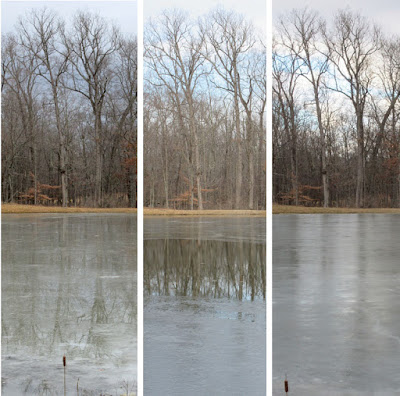













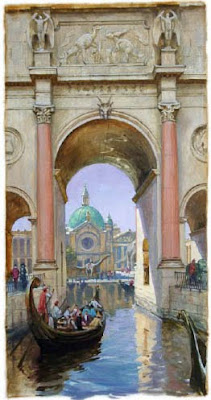








Fascinating... And a little bit disturbing. The music was a good match for this one...
Thanks for some new information!
Love is in the air. A particular day in the calendar is marked especially for the lovers. this lovers’ special day is celebrated all over the world. In India celebrate Valentine’s Day along with www.valentine-gifts-india.com
Kendi yazdığınız şiirleri Resimli Şiirler olarak ekleyebilirsiniz.
Kendi yazdığınız şiirleri Sesli Şiirler olarak ekleyebilirsiniz.